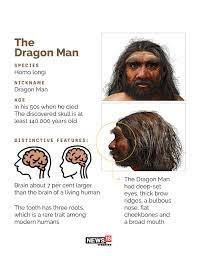Science & tech
Recently, the researchers from China
have claimed to have found an ancienthuman skull that would belong to an
altogether new species of humans.
·
The researchers working in Israel have also recognized
a previously unknown kind of ancient human referred to as “NesherRamla Homo”
that co-existed with homo sapiens nearly 100,000 years ago.
Key Highlights
·
The researchers have noted that the cranium (the
portion that encloses the brain) can be over 146,000 years old.
·
The skull was found within the Songhua stream in
north-east China’s Harbin town.
·
The findings from the site in Israel are dated to
140,000-120,000 years past.
·
The members of the species NesherRamla Homo may hunt
little and huge game and that they used wood for fuel, cooked and roast meat,
and maintained fires.
·
Neanderthals (Homo neanderthalensis) are believed to
be the nearest extinct human relatives and lived regarding 400,000-40,000 years
past in Europe and southwestern to central Asia.
·
As per the Smithsonian National museum of natural
history, there are over twenty one human species .
How China’s Dragon slot in the
definition of human?
·
The cranium found in China has been dubbed the “Dragon
Man” or Homo longi.
·
The name has been derived from the Long Jiang or Dragon
stream in theHeilongjiang province of China wherever town of Harbin is found.
·
The os was reportedly discovered back in 1933, once a
bridge was built over the Songhua stream.
·
The UK’s natural history museum notes that due to the
distinctive form of the os, that was found nearly complete, some members of the
team have recommended that or not its declared a part of a new species of the
genus homo.
·
The size of the skull, that has a considerable brain
capability, is like that of contemporary humans and Neanderthals.
Songhua river
·
It flows northward out of the Changbai Mountains and
cuts across the manchurian Plain before emptying into the amur river, that
separates northeastern China from Russia’s far east.
·
It is that the largest tributary of the Heilong stream.
·
The supply of the stream may be a crater lake referred
to as Heavenly Lake with an elevation of 2,189 meters at the highest of the
ChangbaiMountain.
·
It is considered that its Chinese name “Songhua” is
from its manchurian pronunciation “Songga-liwula”.


Comments